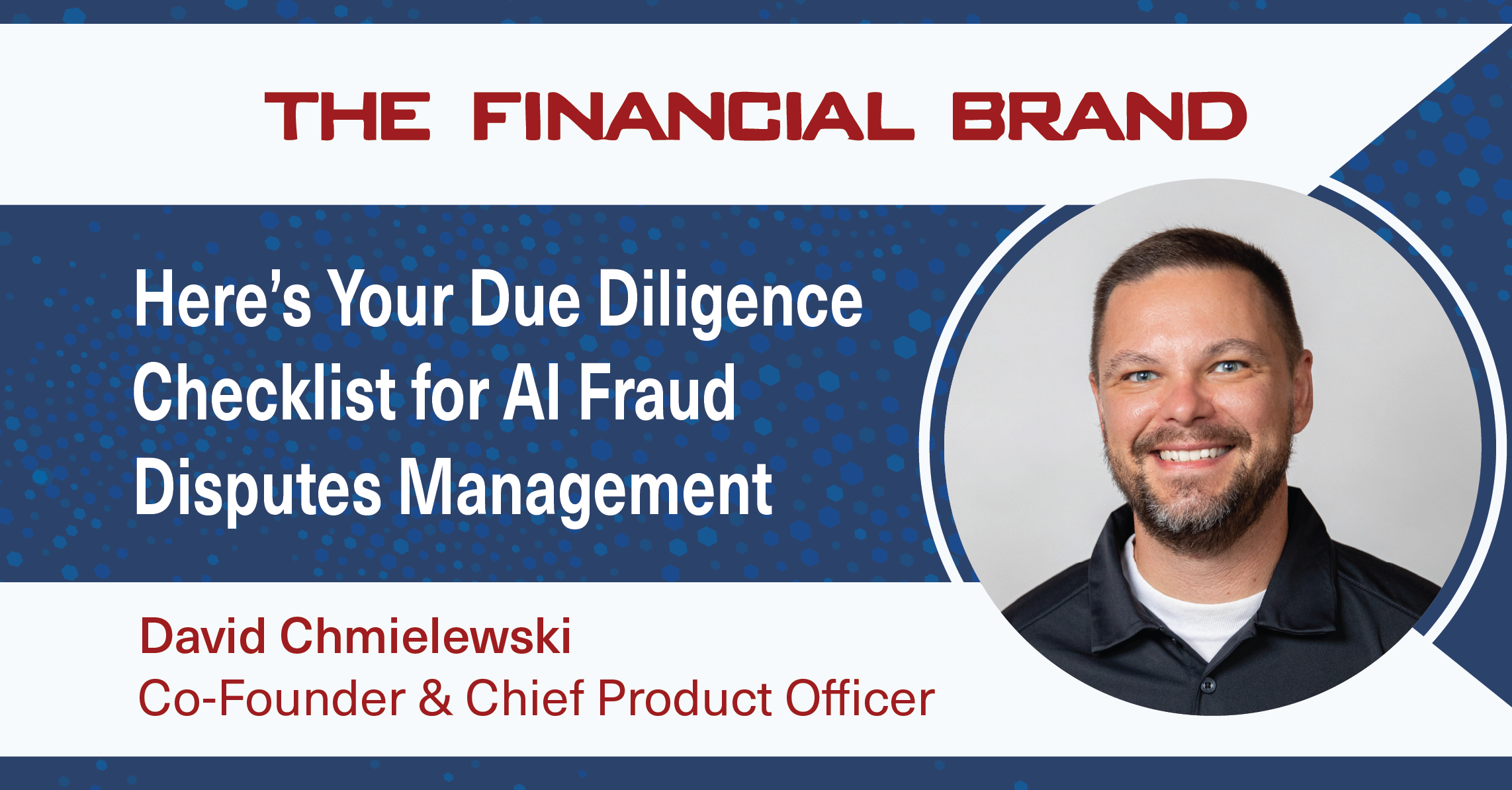
Originally published on TheFinancialBrand.com
The AI gold rush in fraud dispute management has created a market where vendors sell experimental prototypes as proven solutions. This can result in expensive chaos when scale meets reality.
While every platform claims “AI-powered” capabilities, true automated dispute management requires what most lack: years of proven data and millions of resolved cases that train AI on real-world outcomes. The difference between failed implementations and lasting success comes down to whether your AI learned from months, or even a few years, of limited data versus a decade of historically rich contextual intel.
Smart Financial Institutions Are Asking Harder Questions
The dispute management market is saturated with vendors pitching narrow AI features as complete solutions. But in regulated financial services, the stakes are too high for technology that’s barely out of beta.
Forward-thinking institutions are cutting through the noise by starting with three critical questions: Is this AI actually proven at scale? Does it integrate with our existing infrastructure? Can it handle our complete dispute process, or will we need multiple vendors to fill gaps?
The Essential Questions Every Financial Institution Should Ask
After the initial review, it’s time to move beyond surface-level marketing claims and dig into the operational realities that separate proven solutions from experimental technology. The following four questions can help your team reveal whether you’re considering a mature platform that can deliver consistent results or a prototype that may struggle when your dispute volumes scale.
“How Many Disputes Has Your AI Actually Resolved?”
This seemingly simple question reveals everything. It separates mature, tested solutions from experimental prototypes dressed up as enterprise software.
Watch for vague metrics without concrete numbers, references to beta customers rather than production deployments, and heavy emphasis on being “cutting-edge” without demonstrated outcomes. Look for actual case studies versus hypothetical use cases. Ask for specific dispute volumes and timeframes, concrete proof points showing millions of resolved disputes, and measurable results across different institution and organization types.
A platform that’s processed 100,000 disputes over six months tells a very different story than one that’s handled millions over several years. Your customers and members deserve solutions tested in the real world, not beta programs disguised as enterprise-ready platforms.
“What Other Vendors Will We Still Need?”
Many institutions discover too late that their “comprehensive” solution only handles one piece of the dispute process. This question reveals whether you’re looking at a true end-to-end platform or a point solution that creates operational fragmentation.
Be wary of vendors who focus on just one part of the dispute process, require integration with existing tools for basic functionality, or can’t address the full lifecycle from intake to resolution. Financial institutions operate with lean teams and tight budgets. The last thing you need is vendor fragmentation that increases complexity, compliance or training burdens.
Look for configurable platforms that handle intake through resolution, eliminate multiple vendor relationships, and offer flexibility to evolve as your needs change.
“How Does This Integrate with Our Core Systems?”
Integration capabilities make or break the member experience. Ask specifically how the system works with your core banking platform, CRM, and fraud detection tools.
Avoid solutions requiring complex integration with extensive IT resources, operating in isolation from your technology stack, or needing custom development for basic connectivity. Your dispute management system shouldn’t force customers or members to repeat information or create extra work for staff.
The best solutions offer low-code integrations that work seamlessly with existing technology, create natural information flow between systems, and maintain personalized service without additional cutomer or member friction.
“What Does Implementation Actually Look Like?”
Implementation reality often differs dramatically from vendor promises. This question separates vendors with proven methodologies from those still figuring out how to scale.
Avoid vendors with unrealistic timelines stretching beyond reasonable expectations, extensive customization requirements before basic functionality, or impressive pilot results that struggle at production volumes. Staff should see measurable workflow improvements quickly, not after months of configuration and training.
Look for production-ready platforms with clear implementation timelines, established methodologies with track records, and the ability to demonstrate value within 90 days.
Spotting Vendors Who Oversell and Underdeliver
The Fragmentation Trap
Many vendors package narrow AI capabilities as complete solutions, excelling at single functions while leaving you to find separate vendors for everything else. For community banks and credit unions, every additional vendor relationship means more complexity, training, and potential service failures.
The real cost extends beyond vendor management — fragmentation creates data flow gaps, increases errors, and delivers disjointed customer or member experiences that undermine the personalized service you’re known for.
The “Revolutionary” Red Flag
Be suspicious of vendors promising revolutionary breakthroughs. The most effective solutions combine deep dispute expertise with AI trained on substantial operational data, building thoughtfully on proven foundations rather than discarding best practices.
Effective AI dispute management evolves from understanding both regulatory requirements and the customer and member-first philosophy driving community financial institutions. Vendors who get this balance can offer genuine innovation without unnecessary risk.
Demand the Scale Proof
True AI effectiveness requires massive datasets and years of feedback that vendors with limited dispute volume simply lack. Always demand specific volume metrics and timeline proof points rather than accepting general AI capability claims.
What Financial Institutions Actually Need
The path forward requires solutions that are configurable, comprehensive, and proven. This means a proven AI foundation built on insights from millions of resolved disputes, not pilot programs. It requires configurable architecture with platforms that scale and evolve with changing needs.
Financial institutions need operational depth through end-to-end capability that eliminates point solution fragmentation, combined with integration intelligence that creates seamless connections with existing technology ecosystems.
AI has already transformed dispute management, but don’t get distracted by AI hype. Focus on partners who can back up their claims with actual customer case studies to ensure you’re getting the operational depth your customers and members deserve. Getting fraud disputes right isn’t innovation — it’s obligation.
